Tracy Mattner
Nowhere is the hierarchical structure of our society more apparent than at the airport gate. Once on board, first class passengers recline comfortably while the coach masses shuffle slowly past and into the economy cabin. Zone four passengers are forced to gate check their carry-ons, even though there are remaining spaces in the first class cargo; economy luggage is not permitted to mix with elite luggage. A partial wall protects the more delicate sensibilities from the rabble. Bathrooms are segregated so that economy does not even wipe its ass with the same toilet paper.
From my vantage point behind the great divide, I cannot tell if first class passengers are also forced to watch repeating commercials from CBS, HBO, and Coca-Cola on ten-inch screens just two feet in front of their faces—screens that will not turn off until we’ve reached ten thousand feet. Moments later, passengers are pacified by peanuts, pretzels, and the pffft of pop tops popping. The redeye flight is full and cramped and the cabin is hot, but I manage about three hours of head-hung middle-seat airplane sleep.
The next morning I arrive in D.C. and trudge from plane to subway with heavy eyelids. As I chew dried mango, I notice a sign warning that possession of food or drink in the subway system is punishable by a $100 fine or jail time. This seems…excessive. I imagine the absurdity of calling my mom and reporting that I never even made it to the Occupy Congress protest, because I was arrested for eating fruit on public transit in our nation’s capitol. When I reach Capital Hill and emerge from the underground tunnel, my senses are immediately assaulted by the ugly aesthetic of power that marks the monumental architecture. I am beset on all sides by massive monoliths; each base spreads far wider than its height, imparting the appearance of great weight and inertia. All have an eerily faceless quality and stand in glaring contrast to the abundant green space surrounding them.
Dissident patriots from all across America gradually gather on the expansive but muddy Capitol lawn. The Metropolitan Police Department is out in full force, exerting the obligatory authority as tranquil protesters, greeted by scattered rain showers, are instructed by policemen to stay off the low and wide wall that encloses the soggy grass. They are told it’s for their own safety, for the wall is slippery. The idea that the rough concrete wall might be dangerous or more slippery than the rain-slicked grass and mud elicits laughter. I note that, just as turbulence is now merely “rough air,” riot police have been tamely renamed “crowd control.” A mobile command unit also oversees the event; it is a behemoth surveillance system, purportedly equipped with scores of cameras to record and scan the faces of the crowd as people come and go. I pose in front of it as my friend snaps a photo of me: smiling, waving, and flashing a peace sign.
The day is long and filled with spontaneous and seemingly unending speeches: what I call “Occupy therapy sessions.” It occurs to me that these people want, most of all, just to feel important. It is an enduring and universal human need to be listened to. Yet I make no attempt to mask my annoyance at the ever-present and insatiable ego; as Poet Naomi Shihab Nye writes, “I am not interested in who suffered the most. I’m interested in people getting over it.”
By twilight, I’ve run out of steam. All day I’ve been carrying a fifty-pound backpack over my shoulders, but I decide to stick around for a bit longer; the crowd feels electrified, like a storm is brewing in our midst. Maybe there’s something about the dark that brings out the animal in man. Or maybe it’s just the heightened perception of anonymity that comes with darkness that causes individuals to grow emboldened. Whatever the case, cries of “March! March! March!” begin to ring out across the lawn in a mighty moving crescendo. The crowd, which has swelled to roughly four thousand, easily slices through lines of police cars and swarms the city streets—spanning the entire five lanes at a depth of over three blocks. The sidewalks too are crawling with living, marching, chanting bodies.
The hoard ascends upon and greatly overflows the steps of the US Supreme Court, shouting, “Money! Is! Not free speech!” in an outcry against corporate personhood. After several tense minutes at the Court, in which police attempt a few arrests only to have their targets escape into the chaos, the crowd continues down Pennsylvania Avenue in a giant amorphous flow. An uproar of mixed frustration and laughter erupts when the front lines reach the Newseum, a seven-story museum dedicated to news and journalism. Etched in four stories of stone are the 45 words to the First Amendment of the US Constitution. Both green and red laser pointers dance over the stone edict as the crowd reads in unison, “Congress shall make no law respecting an establishment of religion, or prohibiting the free exercise thereof; or abridging the freedom of speech, or of the press; or the right of the people peaceably to assemble, and to petition the Government for a redress of grievances.”
The spirited mass then moves in on the White House; like a military installation, it stations itself outside the iron fence. Thousands of individuals chant furiously, in unison, “Obama! Come out! We have some things to talk about!” A smoke bomb, presumably thrown by an agitator in the crowd, goes off just inside the fence, and for a moment we think we’re being tear-gassed by the Secret Service.
By now the crowd’s energy has seemingly peaked and begun its gradual downturn. I suddenly feel my weariness again and lean up against a stack of metal barricades that happen to be on the street, positioning my bag so that its weight is held up by the structure and not my back, which by now is beginning to spasm. I am forced to step aside by a self-described “yarn-bomber.” This renegade knitter busies herself with wrapping red yarn around and around and around everything in sight—and has her heart set on weaving some crimson through the barricades’ metal bars. I am approached by a reporter for the Washington Post who asks to interview me, and I deflect the questions to my travel companion. I am not an authority; I am one among thousands. Beyond that, I am confused when approached with the usual questions of, “Why are you here today?” and, “What would like to change?” At this point the answers seem so rudimentary that I have lost patience for them. I would be happy to engage a stranger on the street with this query, but from a reporter these are not genuine questions. Noam Chomsky once shared an observation regarding the futility of speaking truth to power: “Power quite probably knows the truth already and is mainly interested in suppressing or limiting it.”
The next day the Washington Post is the only major newspaper to run a story about the protest, greatly underreporting the number of participants and not including any words from the protestors who were consulted; thus it appears that it wouldn’t have mattered if I had spoken anyway. Quite likely in the minds of those who weren’t there, the entire day’s events never actually happened.
After hopping a bus to New York City, I take the night to relax on the couch with a book as Back to the Future plays on the television. I don’t intend to watch the movie, but I do. I don’t intend to read anything into it, but I do. In the beginning of the movie, when Marty McFly is racing through the mall parking lot and travels back in time, the camera lingers on a Bank of America for what seems like a little too long. At first this seems trivial…until I notice that in Back to the Future Part III, which takes place in the Wild West of 1885, a Wells Fargo figures prominently into the screen shots—the most unintentionally comic case of product placement I have ever considered.
As soon as the movie credits start rolling, a reminder appears at the bottom of the screen: 3 Days until the Real Housewives of Beverly Hills on Bravo! This is my cue to retire, but I am kept awake by nightmarish images of the Real Housewives drama and the constructed culture of envy that is the driving force of American consumption. Our airwaves are inundated with it. Because they are a profoundly influential and yet limited resource to which not everyone has access, the airwaves were originally established as a public trust—meaning the content was largely restricted by the requirement that it benefit the common good. I cannot fathom what good such dramas impart. It is a mostly sleepless night.
The next morning, I gaze out the window of the café in Brooklyn where I’m having breakfast, and my eyes rest on a painted gray wall across the street; it is partially lined with a series of bright yellow and black “Avoid Occupy” stickers. Not everyone is a fan, I think to myself. Only after breakfast do I have a view of the lower half of the wall; it is covered with a series of large white fliers that read, “Buy More Stuff” in bold black letters.
Avoid Occupy. Buy more stuff.
A rally has been planned for that evening at Zuccotti Park in Lower Manhattan where Occupy Wall Street originally began. The event has been dubbed “Occupy the Courts.” It is a protest of the January 21, 2010 Supreme Court decision in the case known as Citizens United vs. FEC, in which the Court held that corporations are entitled to unlimited independent spending for political purposes, under the First Amendment right to free speech.
Corporations are people. Money is free speech.
When we arrive the temperature is roughly 25 degrees, and I’m thankful I’ve just visited a street vendor for a pair of ten-dollar gloves. My rapidly condensing breath makes me look like a smoker—or even a fire-breathing dragon. Despite the cold, a crowd begins to gather. One man, ragged, worn, and quiet, is wearing a gigantic sign that reads, “Freedom of speech has always had sensible limits: yelling ‘fire’ in a crowded theater, prohibited; disturbing the peace, prohibited; slander, prohibited; controlling too many TV/radio stations or newspapers, prohibited; unlimited campaign funds corrupting democracy, allowed (US Supreme Court, Jan. 21, 2010).”
A handful of women have brought poster boards, markers, and other sign-making accoutrements, so I busy myself in fashioning a sign while my hands tremble with what I assume is a combination of excitement and anxiety. In multi-colored sharpie, it reads, “American corporations use money to silence free speech,” and features a shaky and hurried depiction of a face whose features are almost entirely obscured by a dollar bill.
The march is full of assorted flags, signs, chants, and people, escorted by the NYPD, and spotlighted by blue and red police lights. Throats go raw from raising tired voices into the night air. The protesters end in Manhattan’s Foley Square where a stage and microphone have been set up in advance. I’ve been drinking coffee all day in an attempt to keep warm and now desperately need to unload some liquid baggage. Perhaps naively I had arrived in New York City expecting to find a public restroom in the subway. At this point that notion seems laughable; I’ve quickly realized that toilets are a luxury to which the general public is not entitled. I hesitate then decide to approach a police officer, asking if there are any coffee shops open nearby. His expression tells me that I am an idiot as he points to the Starbucks in the distance. Inside I receive the customary reminder: restrooms are for customers only. A lock-and-key system ensures that the rule is strictly enforced, so I promptly buy a cup of tea and rush to the bathroom cell, relieved.
When I join back up with the crowd I am just in time for the “Smash Bank Polka” (aptly titled, as it is a lively polka song about destroying banks). I don’t mind that I am one of five people dancing; it is so cold that I don’t know how others are standing still.
After the band the speakers begin. Journalist and author Chris Hedges—who many times has spoken publicly to Occupy crowds and been arrested for acts of civil disobedience—announces that he is suing President Obama over the National Defense Authorization Act (NDAA), as it is in direct violation of the US Constitution.
Harvard Law Professor Lawrence Lessig—who is also director of Harvard’s Center for Ethics—has just arrived by train from Boston, with the sole purpose of speaking for just three minutes at the event. (He flew home immediately afterward.) There is something strangely profound about hearing a Harvard intellectual weave f-bombs into his call for campaign finance reform. Our “republic,” Lessig reminds us, is a form of government in which citizens conduct their affairs for the benefit of the common good and not the good of the ruling class. A corporation, he continues, cannot cast a vote based on the interest of the common good; it is required by law to operate in the service of profit and the private gain of its shareholders. He says further that democracy has been broken since before Citizens United, and it will not be fixed without publicly funded elections.
Ultimately, both men articulate quite clearly what many occupiers perhaps only instinctively know to be true: the American political and legal institutions are so fundamentally corrupted that affecting meaningful change through these systems is no longer possible.
As I listen to speech after speech, I find my face growing hot as the peppermint tea in my hand. Attempting to conceal the logo, I am utterly mortified to be holding a Starbucks cup in a crowd of people protesting corporate personhood. More than that, I am enraged at the absurdity of having been forced to buy something from a multinational corporation in exchange for the ability to urinate—something which I have no choice, as a human, not to do.
The next morning I wake to find the city in the midst of its first snow of the year. I get lost on the subway and arrive an hour late to the “Occupy the Corporations” march, but find I am actually right on time. (It is somewhat comforting that even the Big Apple slows down for snow days.) A preacher, decked out in a most ornate robe, is giving an inspirational speech about the influence of corporate greed on our nation’s moral fiber. Someone adopts the “human mic” to announce that there is a giant thermos of hot instant coffee/cocoa mix available for all. It tastes terrible, but I am grateful for the warmth. Just as the huddled mass begins its march through the frozen snow, I again feel a flush of shame—this time at dropping my empty Styrofoam cup into one of the park’s waste cans. The degradation of the environment is intimately connected to the issues that Occupy is addressing, and we are complicit even in such small acts. One’s true character is defined by a composite of seemingly insignificant moments.
We snake through Manhattan on a tour of American corporations’ “worst offenders” list, stopping at each headquarters to publicly shame each company with uncomely information and statistics. All the while I can’t avoid noticing a little girl who, though holding her grandmother’s hand, is somehow always adjacent to me in the crowd. She glances over and up at me with deep brown eyes while she repeats my chanting. By the last half of the march she is courageously leading the chants. I am struck by her bouncy brown ringlets, wide eyes, and the stunning degree to which she resembles the young Evey in the film V for Vendetta. I think also of Caterina Sforza, Countess of Forlì, who, when her enemies threatened to kill her children whom they held captive, exposed her genitals from the fortress walls and said: “I have the instrument to bear more!” The point of the legend is not that we should sacrifice our children, but that when the state is attacked or oppressed, there will always be another generation to take up the battle for justice.
On my final night in New York City I cannot sleep, and open Letters to a Young Contrarian by Christopher Hitchens. Hitchens has much to say about inaction in the face of corruption, and repeats the same sentiment in many different forms throughout the book: “Remember that saying nothing is also a decision.” In a most poignant passage, Hitchens writes, “Dante was a sectarian and a mystic, but he was right to reserve one of the fieriest corners of his inferno for those who, in a time of moral crisis, try to stay neutral.” Hitchens has no sympathy for those who passively watched the construction of the Third Reich. He scathingly recalls that the “long-standing excuse for their own inaction had been that, under such terror, no gesture of resistance would have been possible. This depressing discovery need not bind us to the true moral, which is that everybody can do something…”
I immediately think of my own mother, whom I have recently spoken with over the telephone, and who has become very concerned about what she calls ‘me taking the entire world on my shoulders.’ I had told her simply that if everyone, rather than doing nothing, resolved to do something, a few burrows would not be forced to bear the lion’s share. She agreed whole-heartedly that everyone should do his or her own part, but when I pointed out that that meant she too would have to contribute, the line went silent.
Hitchens simply repeats a truth that has been passed down in the traditional lore of widely different cultures for centuries. The story that easily exposes this axiom is an intellectual riddle commonly known as the prisoner’s dilemma. Although such dilemmas occur in real life, they are considered the most fantastic of conflict situations. A very simple dilemma tale from Western Africa goes something like this:
A man is crossing a river with his wife and mother when a beast appears on the opposite bank. As the man draws his gun, the beast says, “If you shoot, your mother will die. If you don’t shoot, your wife will die.” What should the man do?
As the prisoner’s dilemma illustrates, the refusal to act does not absolve a person from blame; to not act is still a choice. Hitchens writes, “There is only one argument for doing something. The rest of the arguments are for doing nothing.”


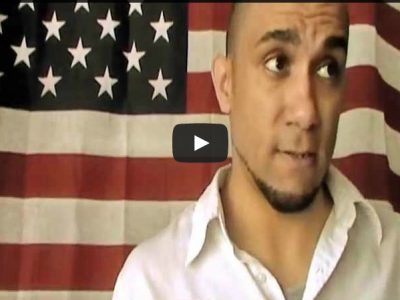
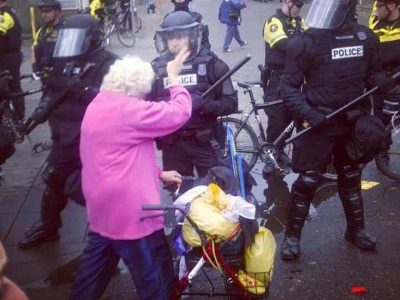
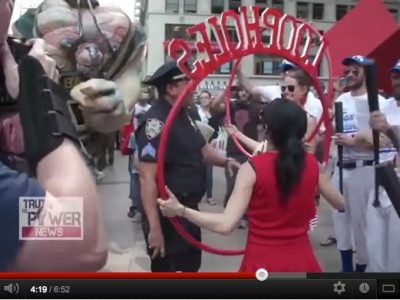
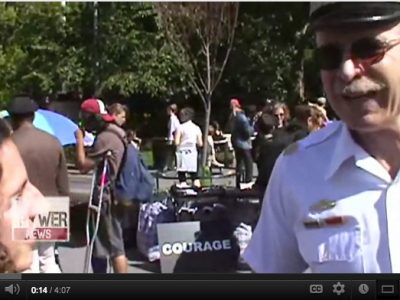
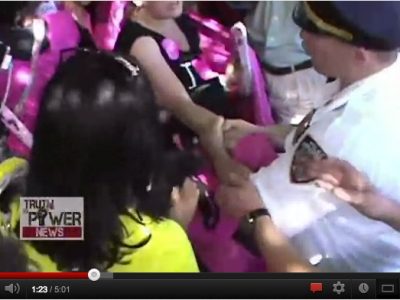
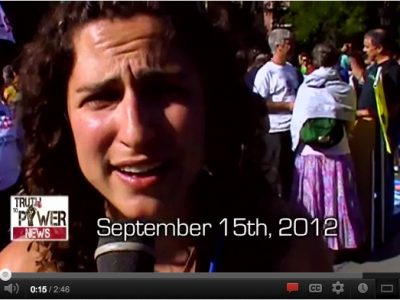
1 comment for “The Prisoner’s Dilemma”